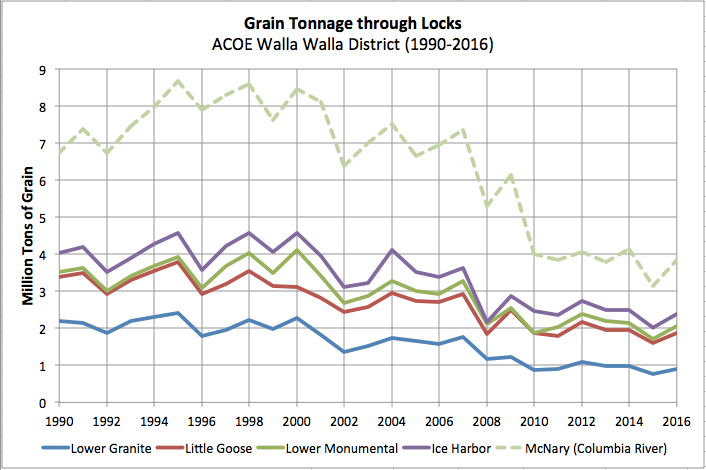forum
library
tutorial
contact

Sustaining Environmental and Economic Balance --
the Case for Columbia-Snake River Dams
by Tom Kammerzell
Capital Press, June 10, 2024
|
the film forum library tutorial contact |

|
Sustaining Environmental and Economic Balance --
by Tom Kammerzell
|
The solution lies in a nuanced, balanced approach supporting salmon
conservation while safeguarding the benefits of barge transportation.
 The Columbia Snake River system is a testament to the intricate dance between environmental preservation and economic vitality.
The Columbia Snake River system is a testament to the intricate dance between environmental preservation and economic vitality.
At the heart of this dynamic lies the network of eight federal dams, currently under the scrutiny of a pivotal study conducted by the Washington State Department of Transportation (WSDOT). These dams aren't just concrete structures supplying power to over 14 million energy customers; they are necessary for barge transportation, a mode of freight transit that not only fuels commerce but also champions environmental stewardship.
Our region reaps the rewards of irrigation from dam reservoirs, enabling millions of acres of fertile farmland that sustains thousands of jobs and forms a crucial economic pillar for rural communities.
Grains cultivated in the region and as far away as the Midwest primarily find their way to grain elevators in the Portland/Vancouver area by barges before being shipped to destinations worldwide. Annually, goods worth up to $21 million or more are transported using the Columbia-Snake River system as a vital marine highway designated by the U.S. Department of Transportation as Marine Highway 84 (M-84).
In a world where sustainability is a pressing concern, barge transportation emerges as a beacon of environmental responsibility. The numbers are clear: barge transportation has a significantly lower carbon footprint than trucking and rail. With the ability to move substantial freight volumes while consuming substantially less fuel and emitting fewer pollutants per ton-mile, barges are true environmental champions in the transportation sector. Studies back this up, showing that barges emit just one-ninth of the carbon emissions of trucks and approximately half of those from rail transport.
The navigability of the Columbia Snake River system, facilitated by the locks and dams, is the bedrock of this eco-friendly mode of freight transport.
The significance of the Columbia Snake River dams transcends their roles as mere infrastructure and power generators; they serve as the cornerstones of the barge transportation network. Remove them, and the consequences are stark: the river would lose its navigability, leading to a surge in freight transportation by roads and rails.
This jeopardizes the climate benefits garnered from barge transport and skyrockets the carbon footprint of goods movement in the Pacific Northwest. Therefore, the dams stand as vital caretakers of economic prosperity and environmental well-being.
While we must acknowledge and address environmental concerns, particularly the impacts on salmon populations and their habitats, we must also recognize the importance of the dams and barge transportation to our region's economy and environmental well-being. Continued investment in robust environmental mitigation and restoration efforts is crucial to the long-term prosperity of our rivers.
The solution lies in a nuanced, balanced approach supporting salmon conservation while safeguarding the benefits of barge transportation. Only through this balanced approach can we ensure our region's continued prosperity and environmental health. Dams and salmon can and do coexist.
As we chart the course forward, let us not lose sight of the invaluable contributions of these dams to our region's prosperity and environmental well-being. They serve as more than mere power generators; they are vital sources of irrigation for millions of acres of fertile farmland, creating employment opportunities, supporting vulnerable communities, and feeding the world. The locks and dams system supports a thriving barge transportation network prioritizing eco-friendly freight transit.
Furthermore, their world-class fish passage system ensures the preservation of salmon populations. Thus, I implore policymakers and stakeholders to consider the full range of environmental impacts, including greenhouse gas emissions from other transportation modes, when charting the course for these critical pieces of infrastructure.
Related Pages:
Hyperbole, Hysteria Won't Solve Lower Snake River Dams Argument
by Editorial Board, Yakama Herald, 2/10/24
learn more on topics covered in the film
see the video
read the script
learn the songs
discussion forum
